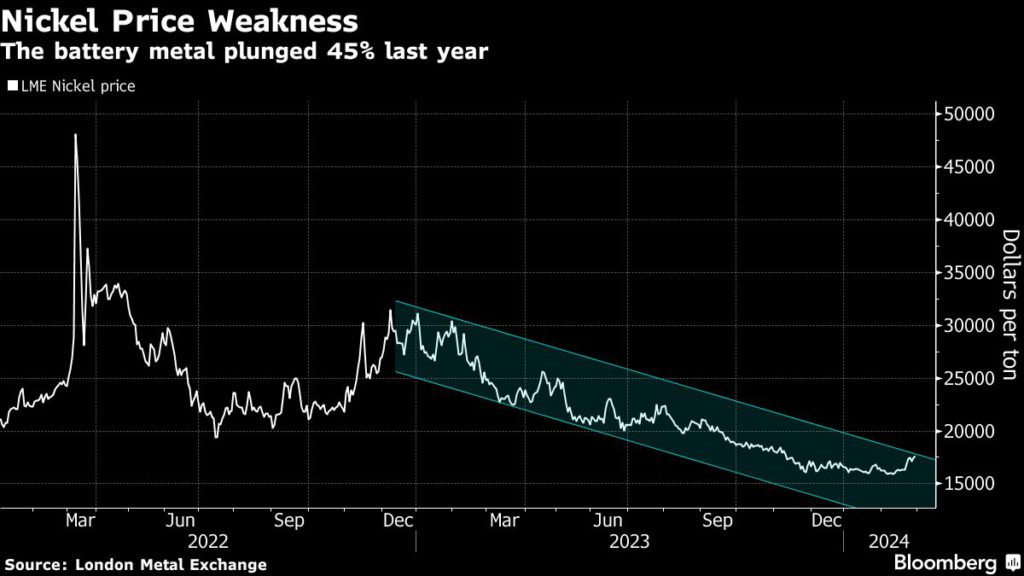
Goldman Sachs finds it is too early to call an end to a battery raw materials price plunge, warning that significant supply pipelines and Western electric vehicle headwinds could keep prices lower for longer.
The forecast, which is part of a research note published on Tuesday, follows a sharp downturn in the price for some of the most sought-after energy transition metals. The end-use of materials such as nickel, copper, lithium and cobalt are wide-ranging and include electric vehicles, wind turbines and solar panels.
Goldman Sachs said the outlook appeared bearish for nickel, lithium and cobalt.
“Despite the significant downside in battery metals prices, with nickel, lithium and cobalt prices down 60%, 80% and 65% from cycle peak, respectively, we believe it is too early to call a decisive end to these respective bear markets,” analysts led by Nicholas Snowdon wrote in a note to clients.
“Margin pressures have generated a meaningful degree of supply rationing effects over the past quarter,” the U.S. investment bank said, citing incremental supply cuts in lithium and nickel.
Together with Western EV-related demand downgrades, the bank said that “significant” supply pipelines mean that the projected 2024 surpluses for lithium and nickel “remain sizeable.”
On a 12-month basis, analysts at Goldman said the Wall Street bank is targeting a 12%, 15% and 25% downside in cobalt, nickel and lithium carbonate, respectively.
It means that Goldman expects cobalt prices to trade at $26,000 per metric ton (down from a previous forecast of $28,000) over 12 months, nickel to fall to $15,000 per metric ton and lithium carbonate to slip to $10,000 per metric ton (down from a previous forecast of $11,000).
Prices of lithium carbonate in China on Tuesday traded at roughly 108,500 yuan ($15,071). Lithium prices are down nearly 70%, compared to the same period last year.
Nickel prices on the London Metal Exchange (LME) were last trading at $17,945 per metric ton on Tuesday, while cobalt prices on the LME stood at $28,550 per metric ton.
Analysts have previously warned that the outlook for EV battery metals remains relatively subdued, with lithium, cobalt and nickel markets generally oversupplied.
“I would say the outlook remains fairly depressed, I think particularly for lithium and nickel, [which have] lengthening supply balances,” Tim Bush, electric vehicle battery research analyst at UBS, told CNBC’s “Squawk Box Asia” on Jan. 9.
“Now, that’s not necessarily a bad thing because it means that batteries will be less expensive for automakers so it helps alleviate some of the pain that some of the U.S. and European automakers have been experiencing,” Bush said at the time.








